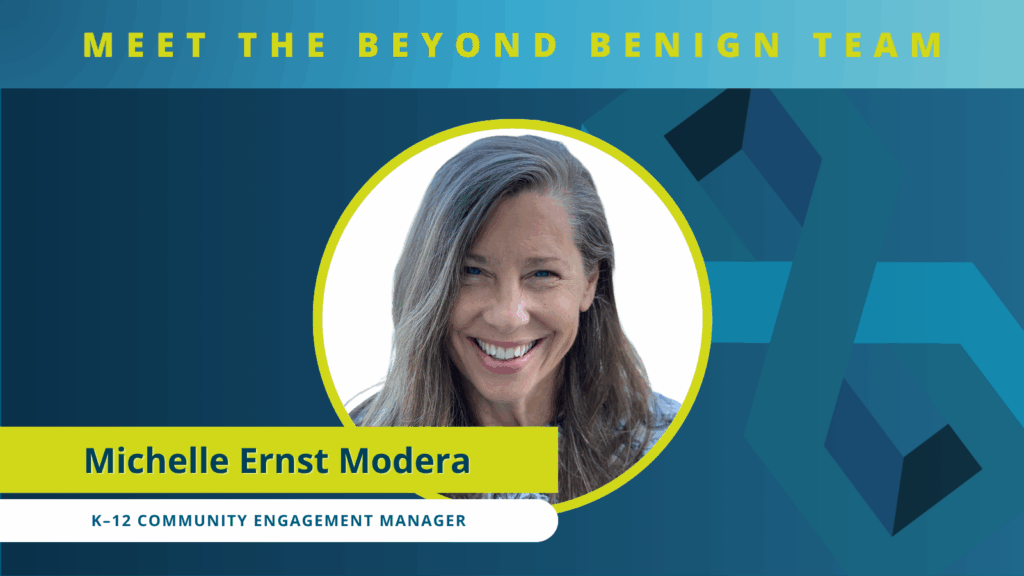 “K-12 education is where the spark happens,” says Michelle Ernst Modera, Beyond Benign’s K-12 Community Engagement Manager. “If we want to build a strong pipeline of scientists, engineers, and citizens who understand sustainability at its core, we have to begin in those early classrooms.”
“K-12 education is where the spark happens,” says Michelle Ernst Modera, Beyond Benign’s K-12 Community Engagement Manager. “If we want to build a strong pipeline of scientists, engineers, and citizens who understand sustainability at its core, we have to begin in those early classrooms.”
Michelle’s work focuses on building that foundation: connecting teachers with resources, training, and a supportive network to help them bring green chemistry to life for their students. With a background in education, sociology, and community engagement, she approaches her work through a relational lens—one shaped by her experience at the National Center for Race Amity, where she learned the power of “calling people in” to learn together.
At Beyond Benign, Michelle helps educators across the country find professional development opportunities, share ideas, and amplify the innovation already happening in classrooms. In the conversation below, she reflects on her path to Beyond Benign, the importance of community in advancing green chemistry, and why K-12 educators are such a vital part of the movement.
Why is K-12 education an important part of the larger green chemistry movement?
K-12 education is where curiosity begins. It’s where exploration and awareness start to take root, long before students ever choose a college major or a career path. If we want to build a strong pipeline of scientists, engineers, and citizens who understand sustainability at its core, we have to begin in those early classrooms.
When students learn to see chemistry as something connected to their lives and communities—something that can solve real-world problems—it changes everything. They carry that mindset into higher education and the workforce, and that’s how long-term change happens.
The challenge is that funding for K-12 programs is much harder to come by. There’s a lot of energy around green chemistry in higher education and industry, but those early opportunities for teachers and students often get overlooked. It’s frustrating because this is the foundation. Without it, we’re missing the very beginning of the story. That’s why so much of my focus is on helping people see how vital K-12 education is to the bigger picture of advancing green chemistry.
What first drew you to education and community engagement, and how did that path lead you to Beyond Benign?
I came into this work through community engagement. I returned to school to pursue my M.Ed. and accepted a fellowship with Beyond Benign. I was originally slotted to help with development, but the K-12 director and program manager moved on around the same time. I started working more closely with the Beyond Benign team, and they encouraged me to take the lead and actually run parts of the program.
What made it click was the culture here. Beyond Benign is unusually transparent and humble. I could reach out to anyone and be genuinely heard. It took me a moment to find my footing as one of the few non-chemists on the team. But my background in community engagement turned out to be very useful for the work we do: building relationships with educators, understanding their reality in the classroom, and creating spaces where people feel invited in to learn together, share their innovative approaches to teaching, and keep contributing over time.
At the heart of it, I’m driven by a love of learning, collaboration, and innovation, and this role lets me use everything I’ve done before while still learning continually in a new field.
You previously worked with the National Center for Race Amity. How does that ‘call people in’ approach shape your work with educators?
Working at the National Center for Race Amity (NCRA) shaped a great deal of how I think about community engagement. The organization taught me the importance of accompaniment—walking alongside people who are learning and taking action and learning with them. What made NCRA unique was its commitment to calling people in instead of calling them out. We created spaces where participants could explore difficult topics like race and equity, make mistakes, adjust, and move forward without fear of public shaming, even as we cultivated a culture of respect and accountability.
That experience directly informs how I approach educators in the green chemistry space. Teaching and learning are both deeply human processes. People need space to experiment, reflect, and grow, especially when they’re integrating new ideas like sustainability and systems thinking into their classrooms. The “call people in” mindset helps create that kind of trust-based community—one where everyone feels safe to learn from wherever they are and contribute what they know.
As K-12 Community Engagement Manager, what are your priorities, and what excites you about this educator community?
My biggest focus is on connection—helping teachers find the professional development, resources, and peer networks that make it easier to bring green chemistry into their classrooms. A lot of my work centers on linking educators to Beyond Benign’s professional development opportunities, amplifying the work of teachers who are already leading in this space, and encouraging them to share their knowledge through conferences, presentations, and collaborations.
What excites me most is seeing the creativity and commitment of K-12 educators. They’re constantly innovating to connect students to sustainable science practices and to reflect on challenges in the world around them through that lens., whether it’s through environmental projects, safer lab practices, or student-led problem-solving. There’s so much brilliance and care in this community, and being able to build spaces where that knowledge and connection can grow and ripple outward is what drives me every day.
Why is community engagement essential for advancing green chemistry in K-12?
Community engagement is really the engine that keeps green chemistry moving forward. Without it, so much of the innovation and learning that happens would stay siloed or locked behind paywalls. When teachers connect with one another—and with colleagues in higher education, industry, and even state agencies—their understanding deepens, and new possibilities open up for sharing that wealth of knowledge.
Green chemistry isn’t something that advances in isolation; it evolves through shared ideas, tested approaches, and collective problem-solving. Each educator brings a different perspective shaped by their students, their classrooms, and their communities. When we create spaces for those perspectives to meet, everyone gains clarity about what we’re doing and why it matters. Simply put, the community makes the movement stronger.
What current projects are you most excited to share?
Right now, I’m most excited about two projects that are helping us rebuild and expand our K-12 green chemistry network.
For New York educators, we’re relaunching the New York Green Chemistry Professional Learning Team (NYGCPLT). This initiative had existed previously but paused when a key partner organization shifted. We’ve been able to bring it back, complete with the ability to offer professional learning credits for teachers. It’s a way for our NYS science teachers to learn how to green labs together and implement them with the support of their peers, creating a strong, supportive network of educators who can inspire one another and help green chemistry take deeper root in labs and classrooms.
For educators everywhere, I’m excited about Beyond Benign’s Online Courses. These are professional development opportunities led by experienced teachers who have real expertise in greening labs and meeting NGSS standards. They’re designed to be practical, accessible, and immediately applicable—and New York State teachers can even take them for free.
For educators new to green chemistry, what are the first steps to take?
Any advice I would share comes straight from the educators in our programs: start small. You don’t have to overhaul your entire curriculum all at once. Try greening one or two lessons or labs to begin with, or look for simple chemical substitutions that make your classroom safer.
From there, take advantage of the incredible free resources that already exist. Start with the community recommended K-12 Favorite Resources collection. Then explore Beyond Benign’s website and the Green Chemistry Teaching and Learning Community (GCTLC) which are full of practical examples, lesson plans, and active forums where teachers share advice and solutions. If you find yourself needing some accompaniment, join a forum or group on the GCTLC, or sign up for one of our online courses.
Lightning Round!
First STEM memory:
Definitely biology. I loved being in the greenhouse during lab. There was something magical about tending to plants and watching science happen right in front of me. As a kid, I was always the one ‘playing scientist,’ exploring outside with a magnifying glass. If I’d had a real chemistry set, I probably would’ve been trouble, but it turns out I was sort of a green chemist: exploring the cupboards, pretending to be in a lab, and mixing all kinds of ingredients, hoping to find something that would create an interesting reaction. I clearly needed some accompaniment because all I created were some stinky and colorful concoctions.
Outside of work:
I’m still very community-oriented. I love working with people of all ages, especially around spiritual and material education and building connections. For fun, I spend time doing watercolor and photography. I’m not a professional by any means, but I love the creativity and mindfulness it brings.
Currently reading:
The Flavia de Luce mystery series by Alan Bradley. The main character is this precocious 11-year-old who uses chemistry to solve murders. It’s such a fun mix of curiosity, science, and mischief.
How You Can Get Involved:
- Sign up for Green Sparks, a free six-part email series designed to make bringing sustainability into your classroom easier than ever.
- Middle school and high school teachers: Enroll in a professional development course to learn how to transform your teaching practices and inspire students to critically engage with environmental and sustainability challenges. Read what previous participants said about the courses here.
- New York-based teachers in grades 6-12: Join the New York Green Chemistry Professional Learning Team, a dedicated space where you can connect with your peers and develop your understanding and practice of green chemistry and sustainable science in your labs.

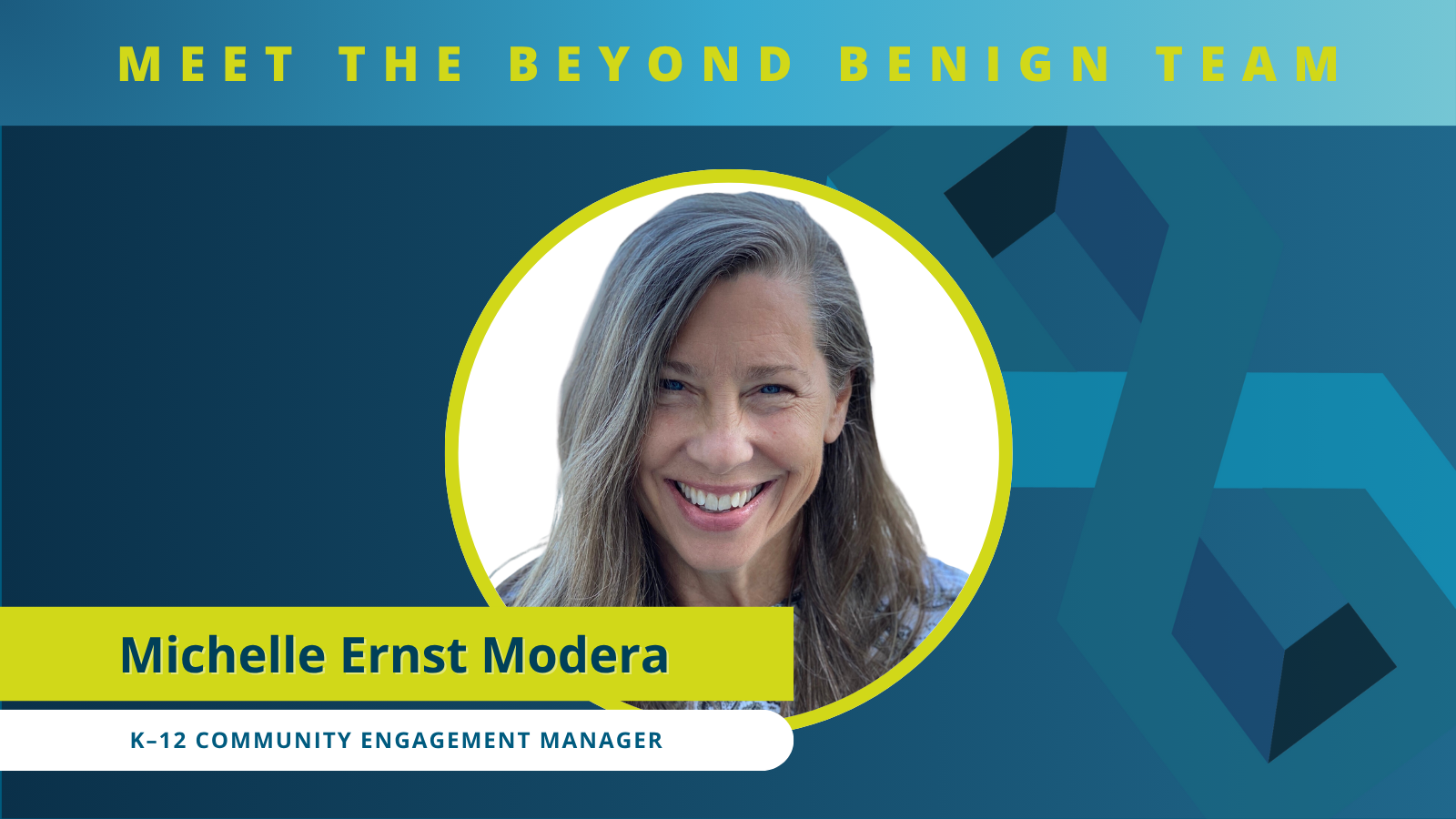
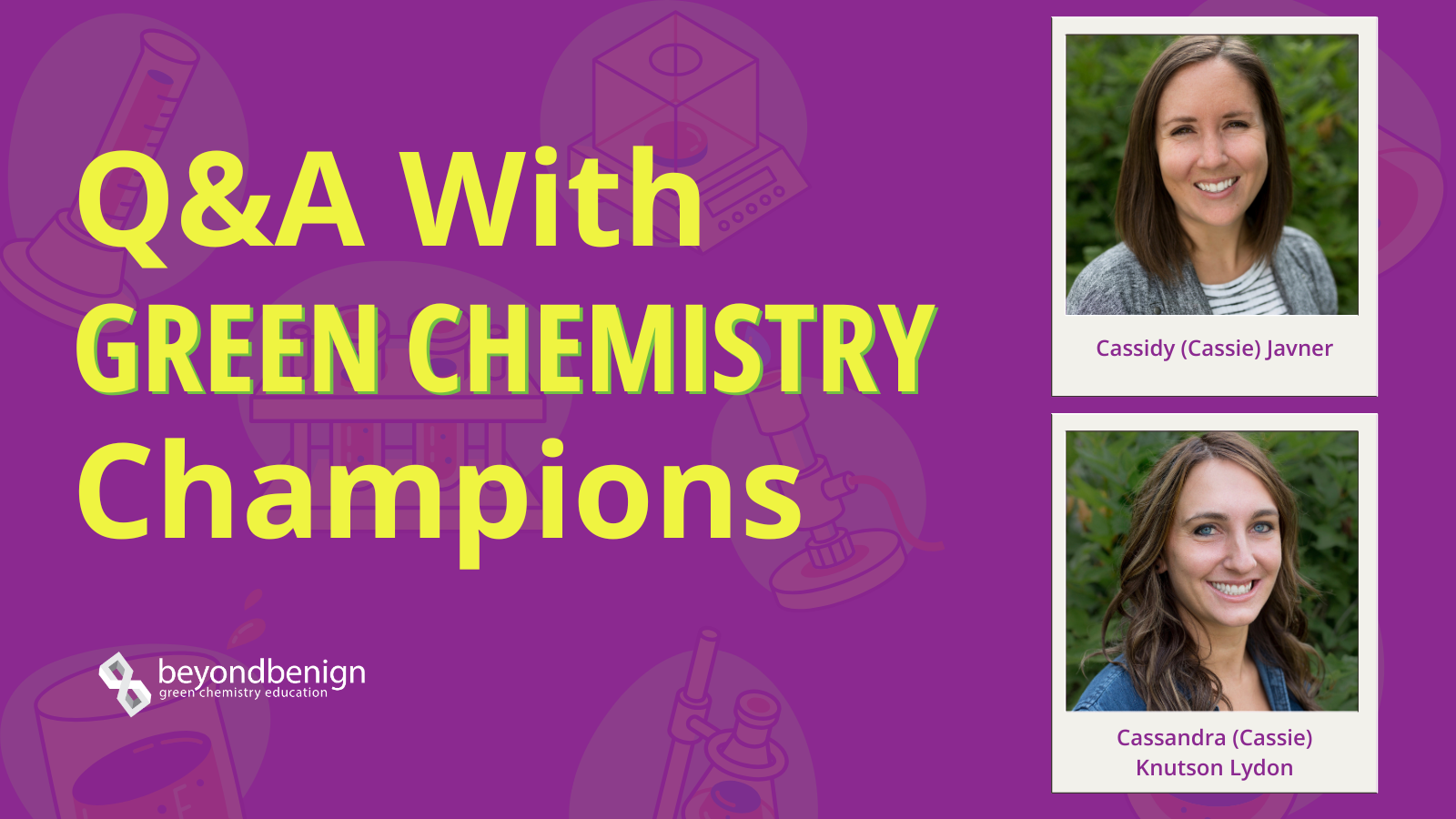 Two outstanding Minnesota chemistry teachers are proving that sustainability belongs in every classroom.
Two outstanding Minnesota chemistry teachers are proving that sustainability belongs in every classroom. 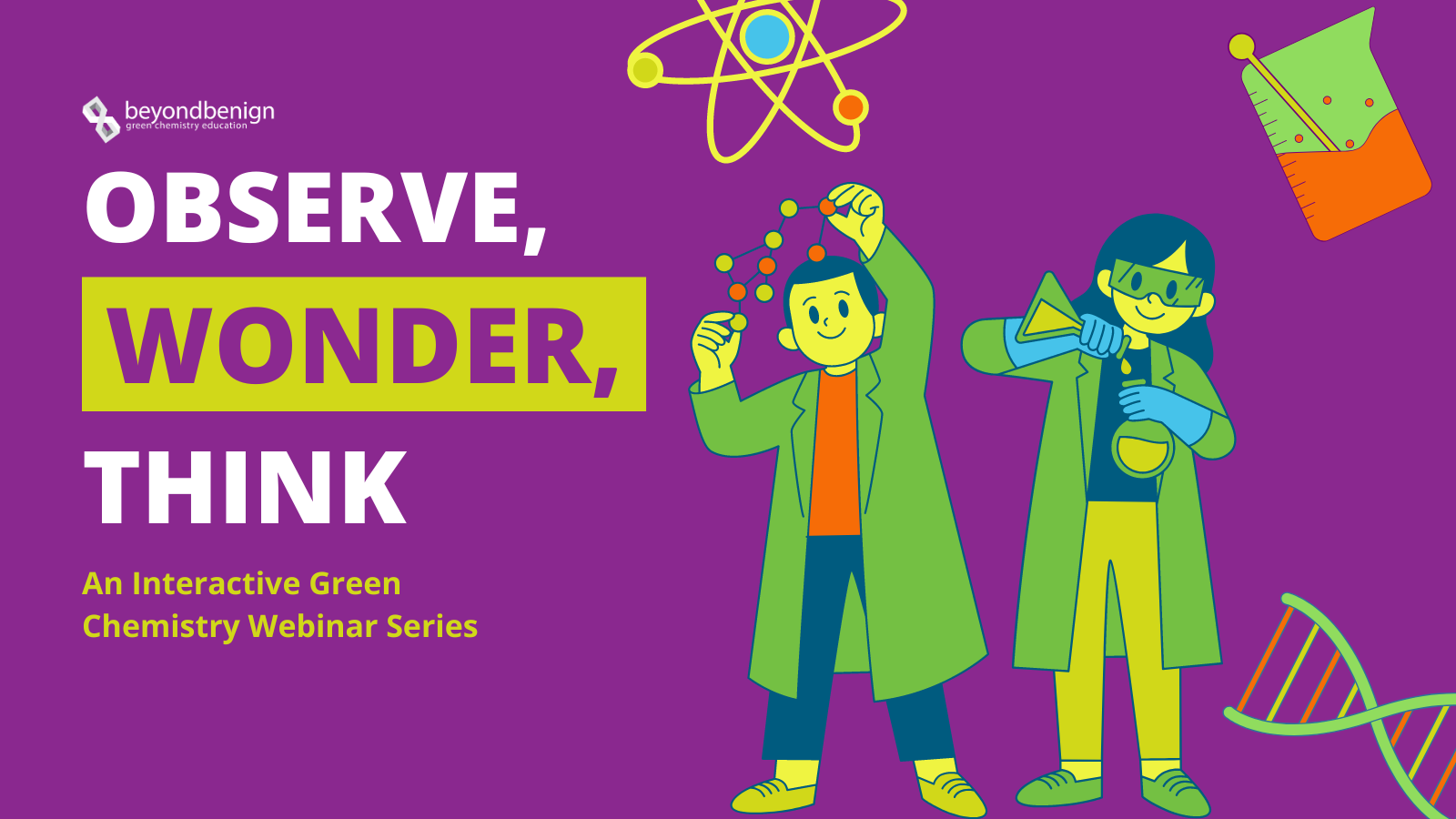 The K-12 teaching community is a powerhouse. By bringing green chemistry into primary and secondary classrooms, teachers can spark student engagement, create safer learning environments, and inspire future scientists to think sustainably. Beyond Benign’s
The K-12 teaching community is a powerhouse. By bringing green chemistry into primary and secondary classrooms, teachers can spark student engagement, create safer learning environments, and inspire future scientists to think sustainably. Beyond Benign’s 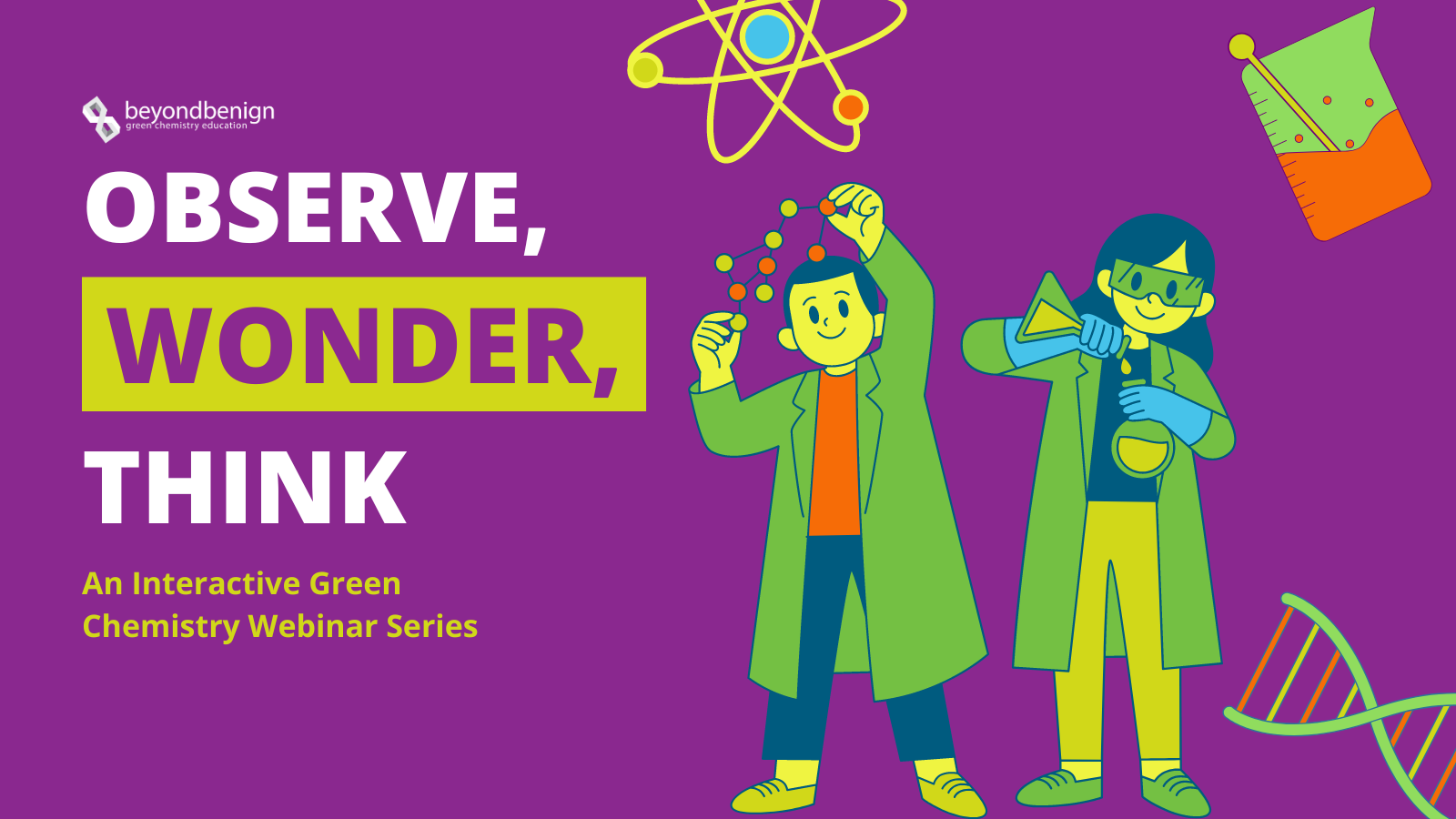
 Beyond Benign’s summer professional development courses help teachers reinvigorate their lessons to better engage students and prepare them for future careers. Through the courses, middle school and high school teachers learn how to incorporate green chemistry into their classrooms, update labs to be safer and more sustainable, and inspire students to critically engage with environmental and sustainability challenges.
Beyond Benign’s summer professional development courses help teachers reinvigorate their lessons to better engage students and prepare them for future careers. Through the courses, middle school and high school teachers learn how to incorporate green chemistry into their classrooms, update labs to be safer and more sustainable, and inspire students to critically engage with environmental and sustainability challenges.  Interested in transforming your classroom or lab for the better? Check out the teacher testimonials below, which reflect the value they found in learning from expert instructors and tapping into innovative classroom resources that incorporate the principles of green chemistry.
Interested in transforming your classroom or lab for the better? Check out the teacher testimonials below, which reflect the value they found in learning from expert instructors and tapping into innovative classroom resources that incorporate the principles of green chemistry.  Teacher testimonials:
Teacher testimonials: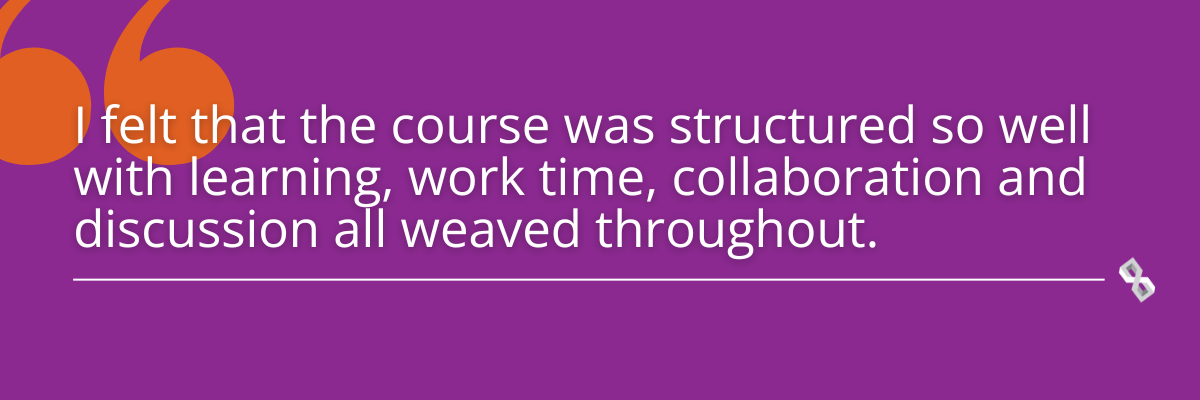

 Teacher testimonial:
Teacher testimonial: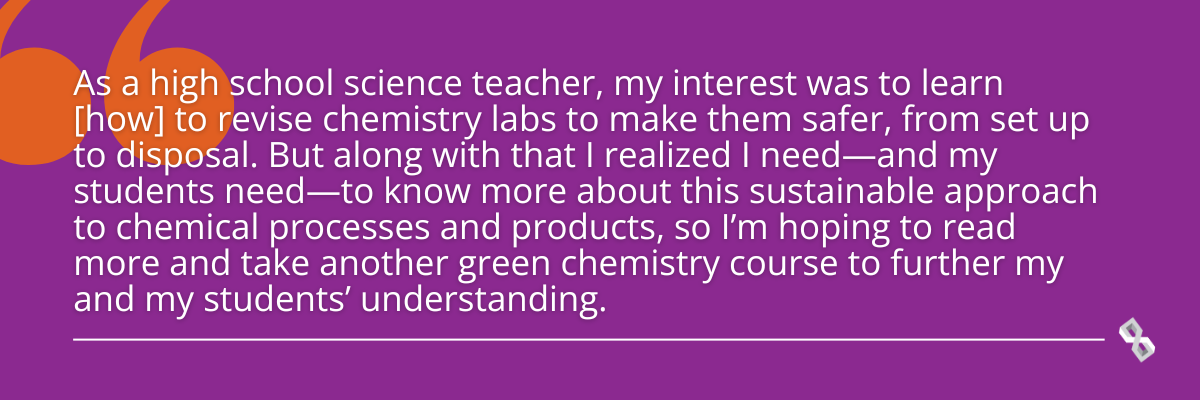 What participants say the courses provide:
What participants say the courses provide:  Teacher testimonial:
Teacher testimonial: How participants plan to incorporate green chemistry in their classrooms:
How participants plan to incorporate green chemistry in their classrooms:
 Ready to transform your chemistry course with innovative labs and resources that help students shape a more sustainable future? Registration is open through June 1, 2025, for these courses:
Ready to transform your chemistry course with innovative labs and resources that help students shape a more sustainable future? Registration is open through June 1, 2025, for these courses: *Teachers who want to take their Advanced Green Chemistry course a step further can apply for the
*Teachers who want to take their Advanced Green Chemistry course a step further can apply for the 
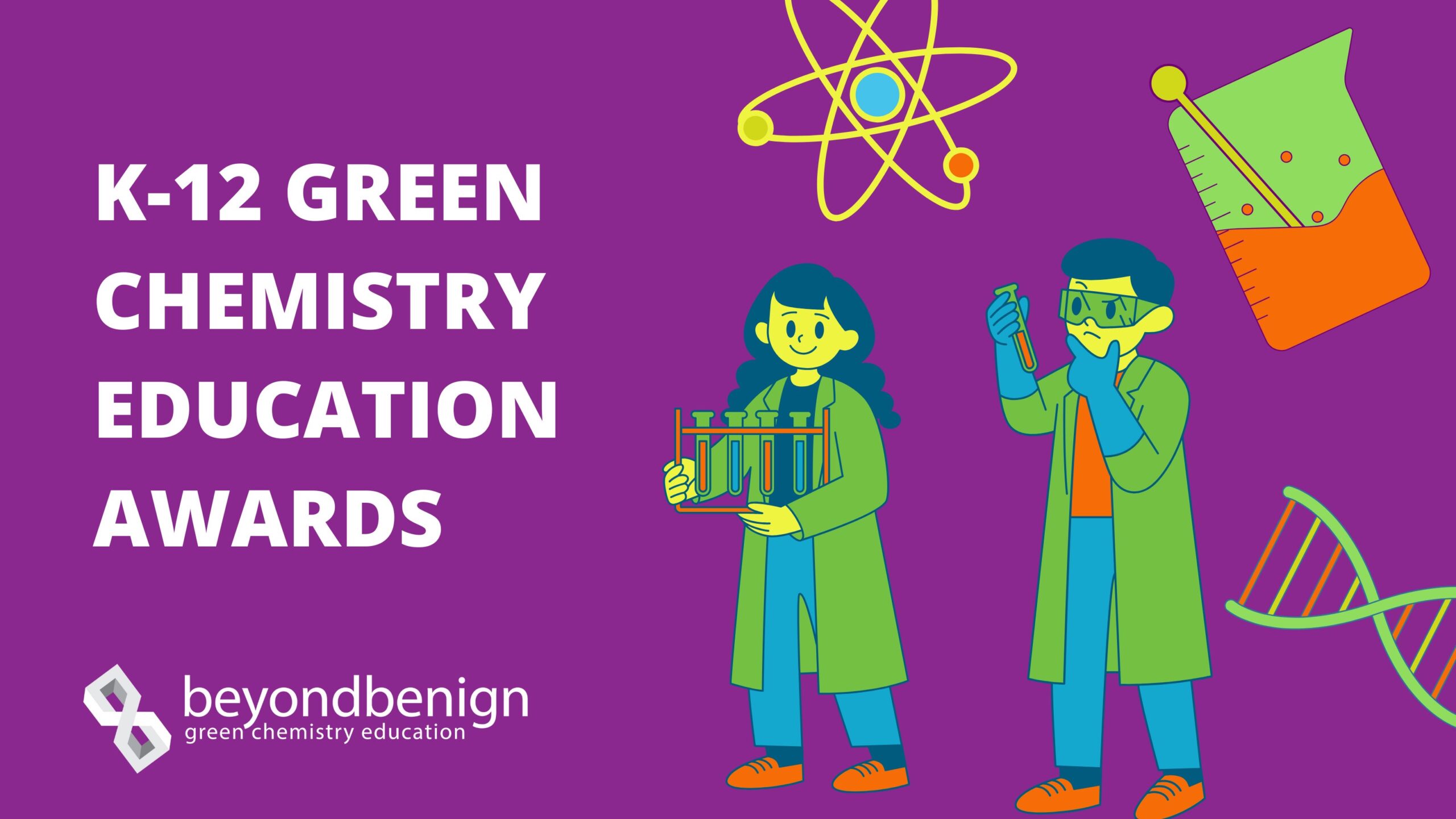
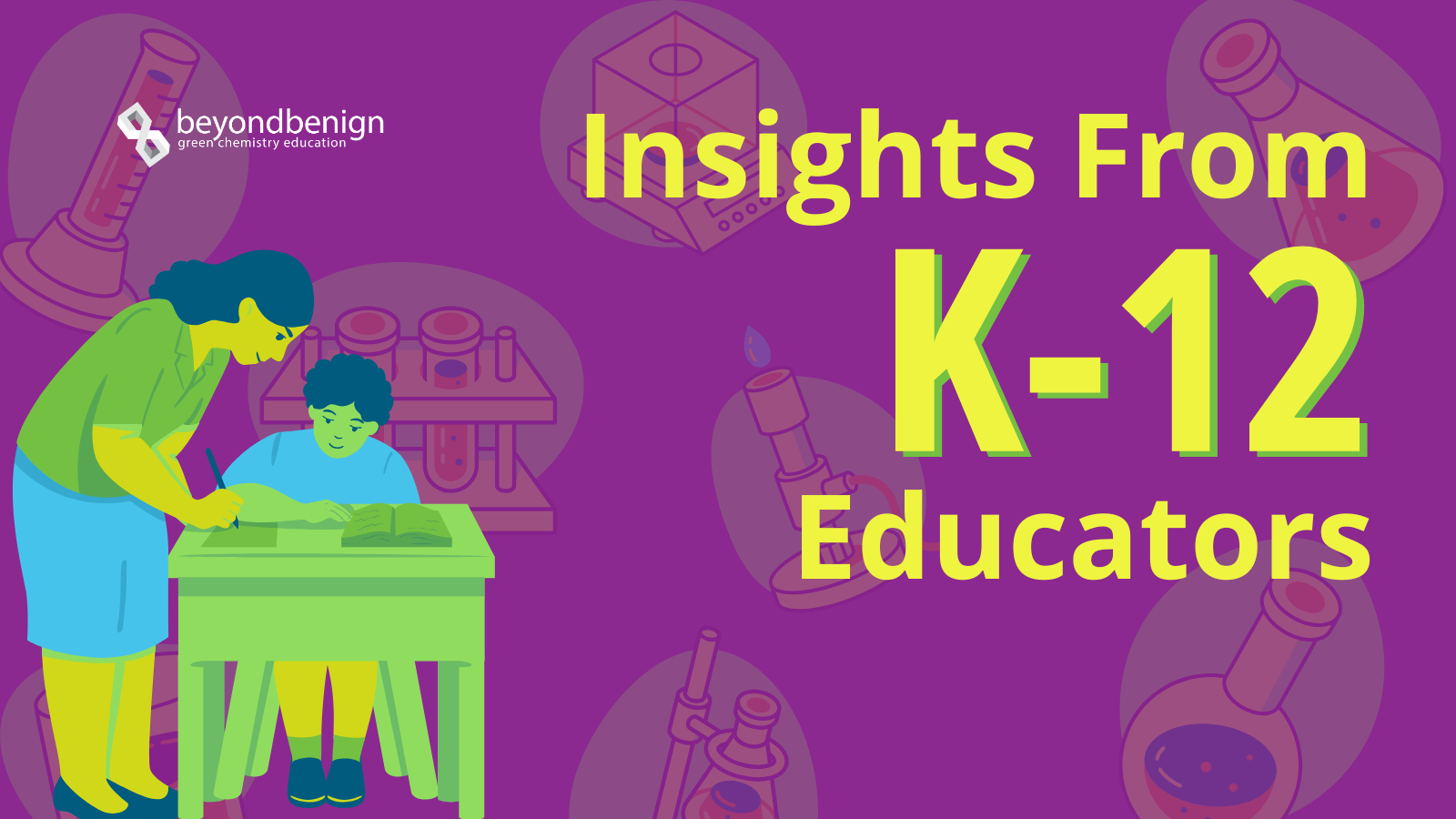 Green chemistry provides a foundation for designing safer, more sustainable science lessons that inspire students to critically consider environmental and societal impacts. K-12 teachers who have integrated green chemistry principles into their classrooms demonstrate how gradual changes to labs and lessons can create engaging and meaningful learning experiences. These insights are drawn from blog posts by Beyond Benign Certified Lead Teachers.
Green chemistry provides a foundation for designing safer, more sustainable science lessons that inspire students to critically consider environmental and societal impacts. K-12 teachers who have integrated green chemistry principles into their classrooms demonstrate how gradual changes to labs and lessons can create engaging and meaningful learning experiences. These insights are drawn from blog posts by Beyond Benign Certified Lead Teachers.

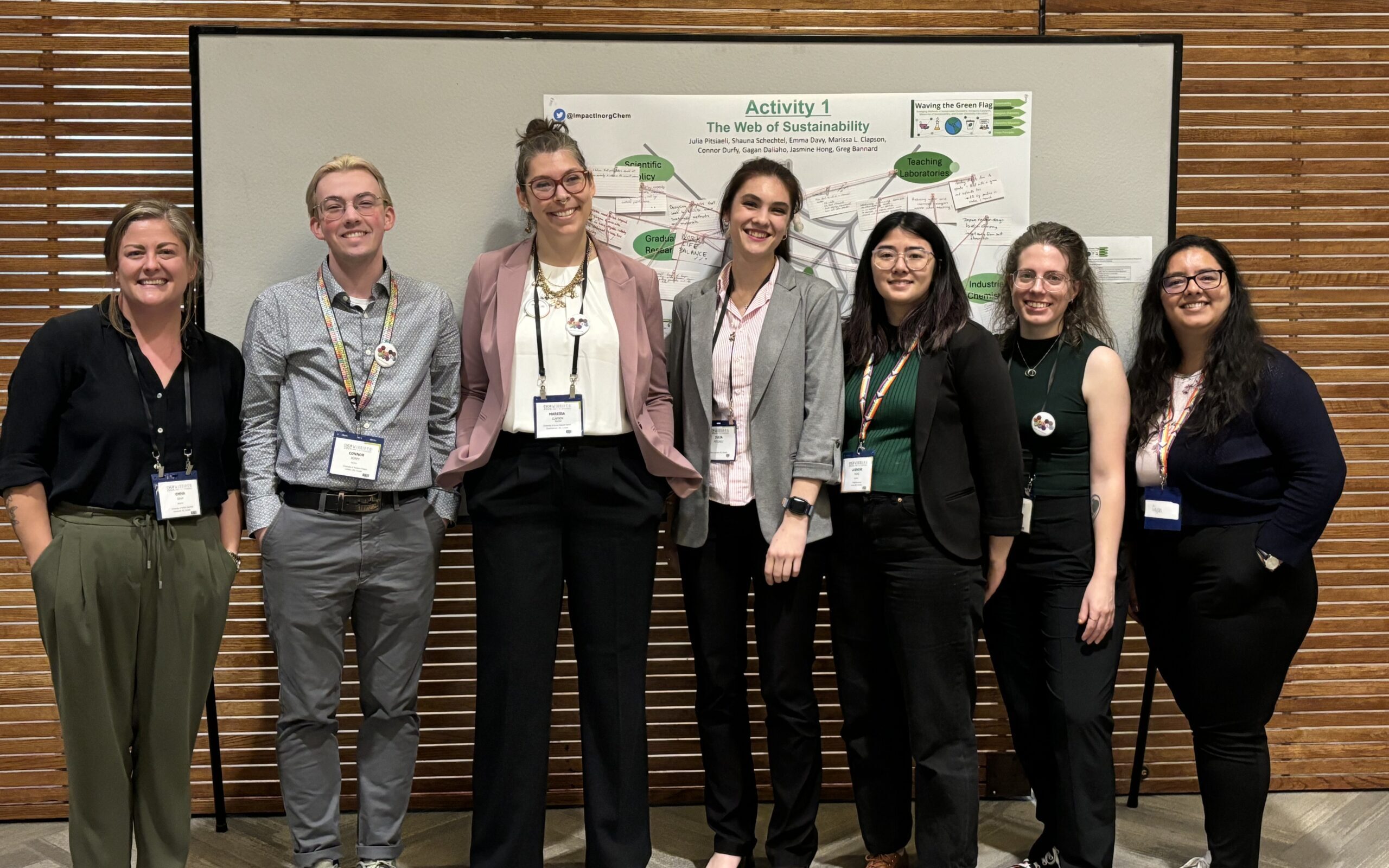


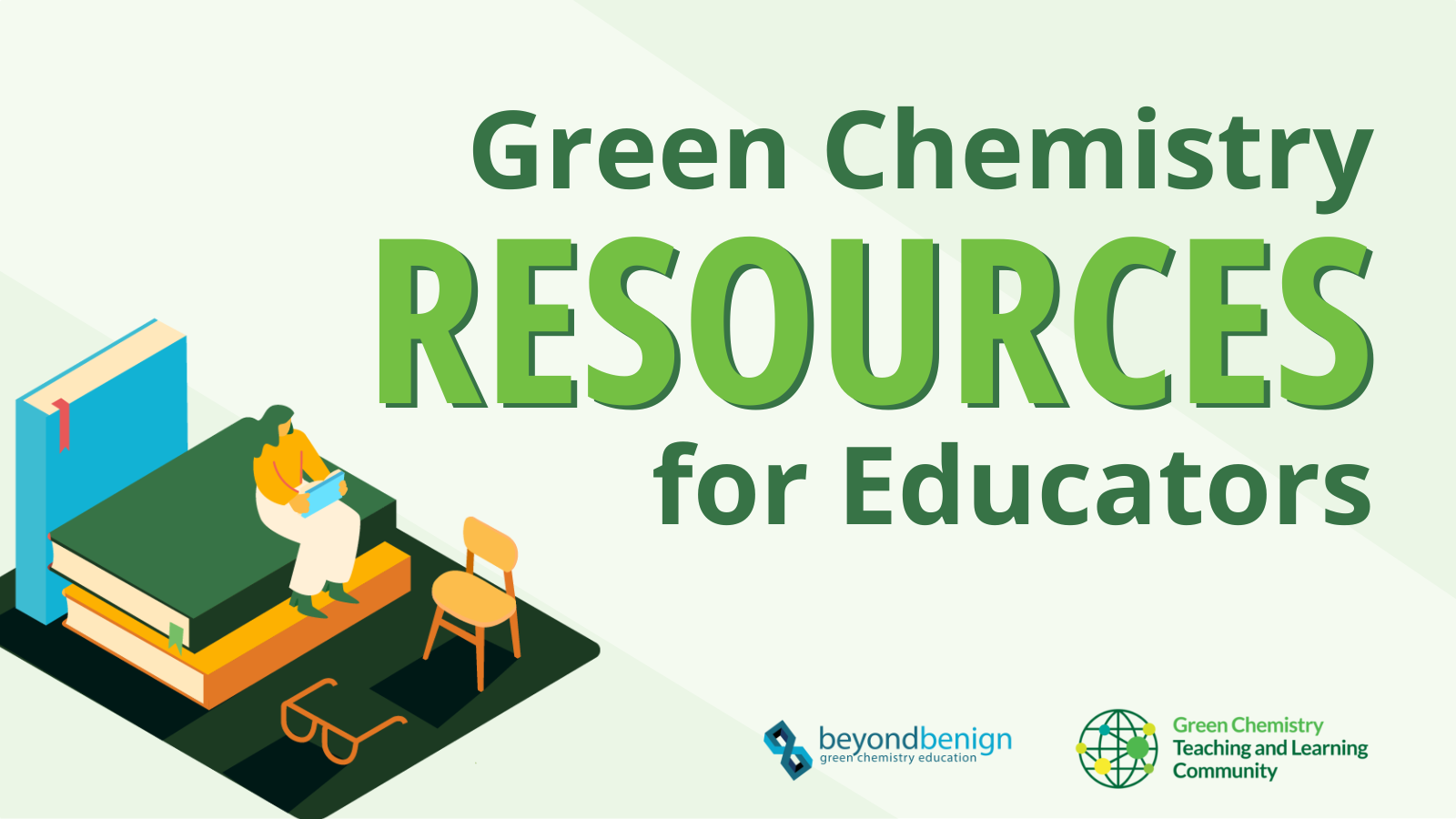
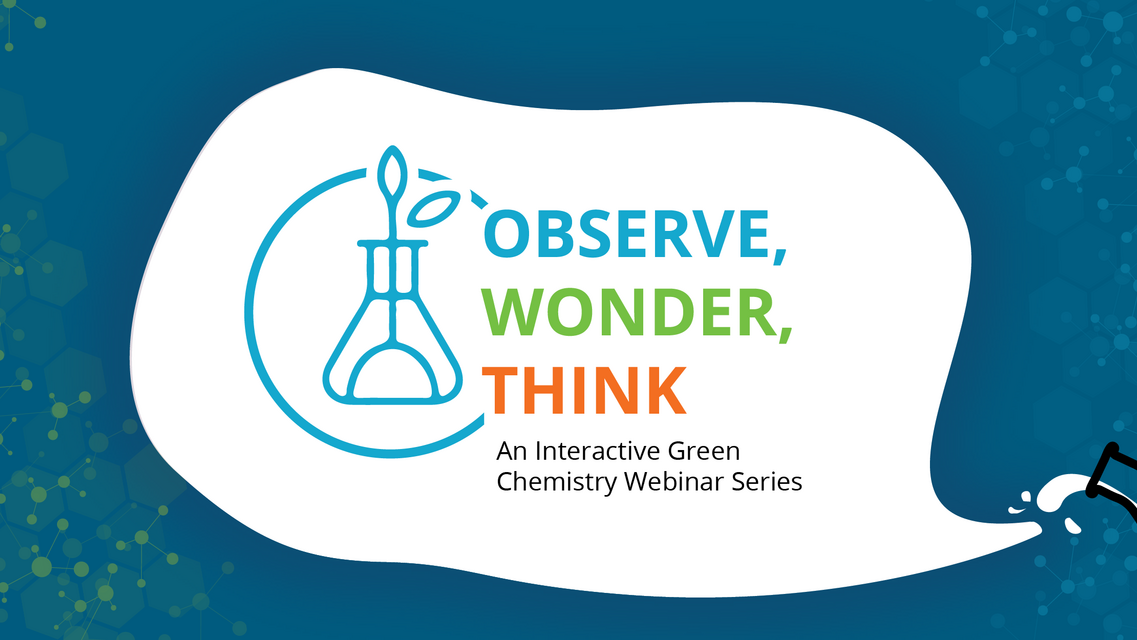
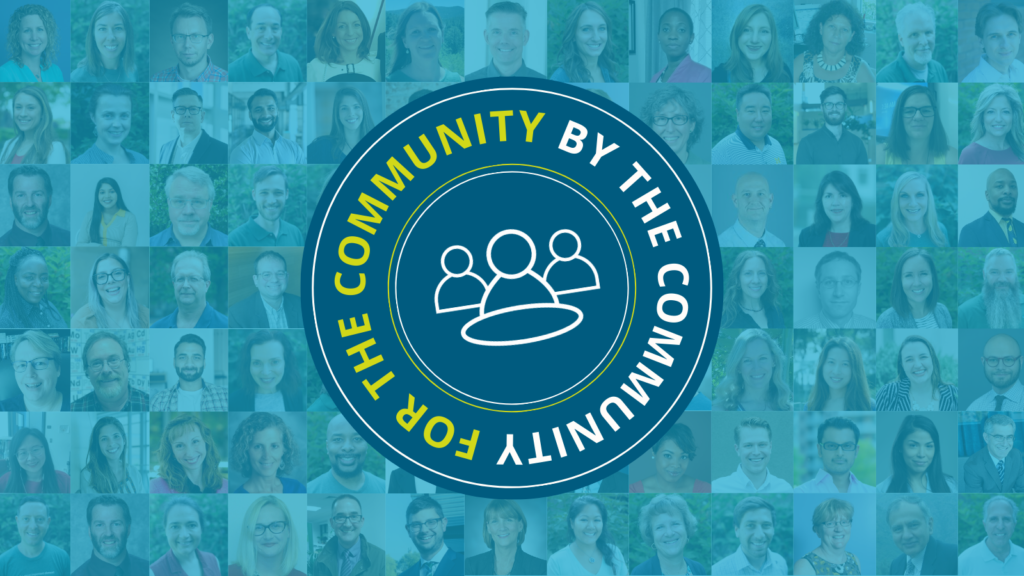
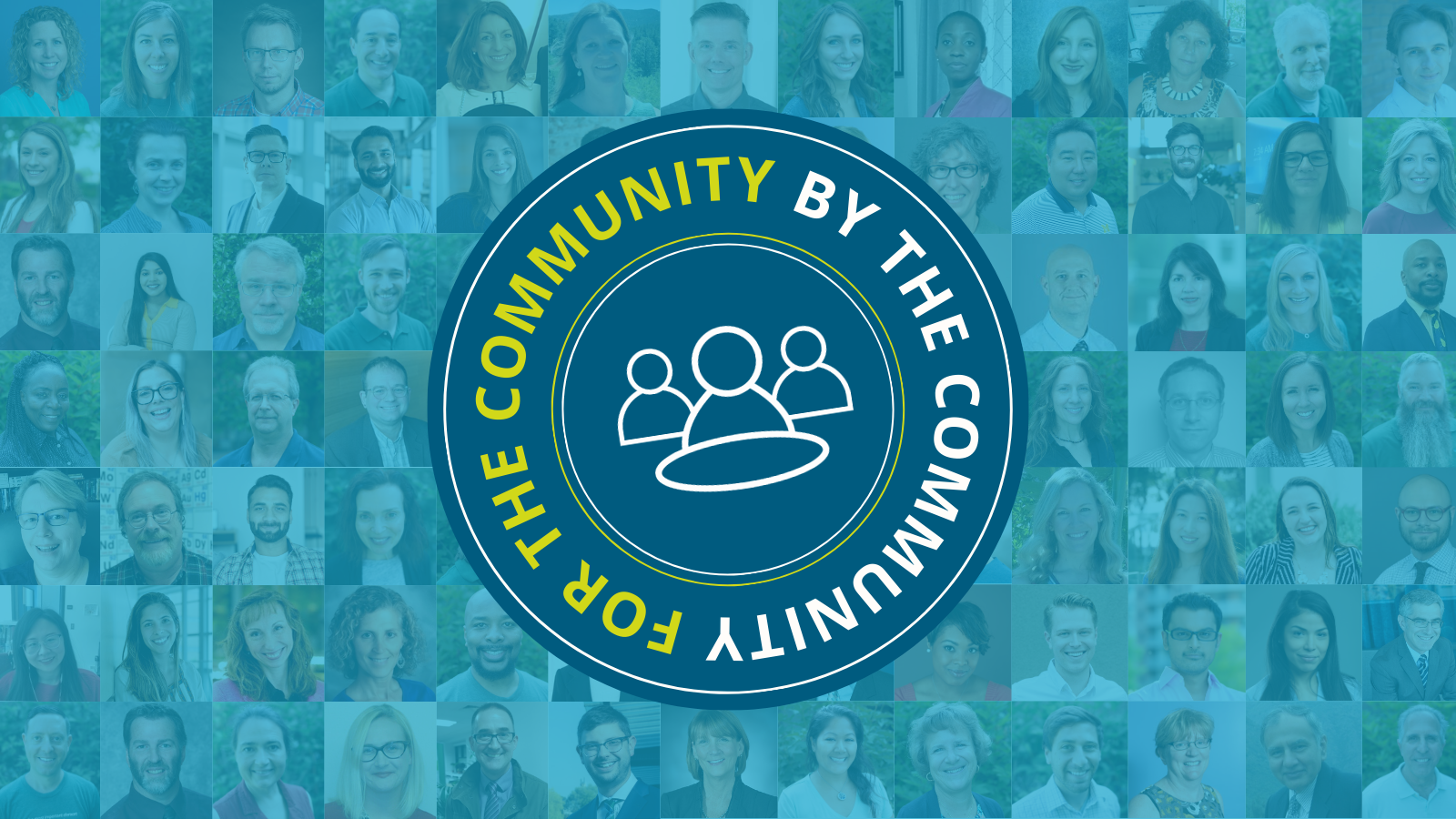
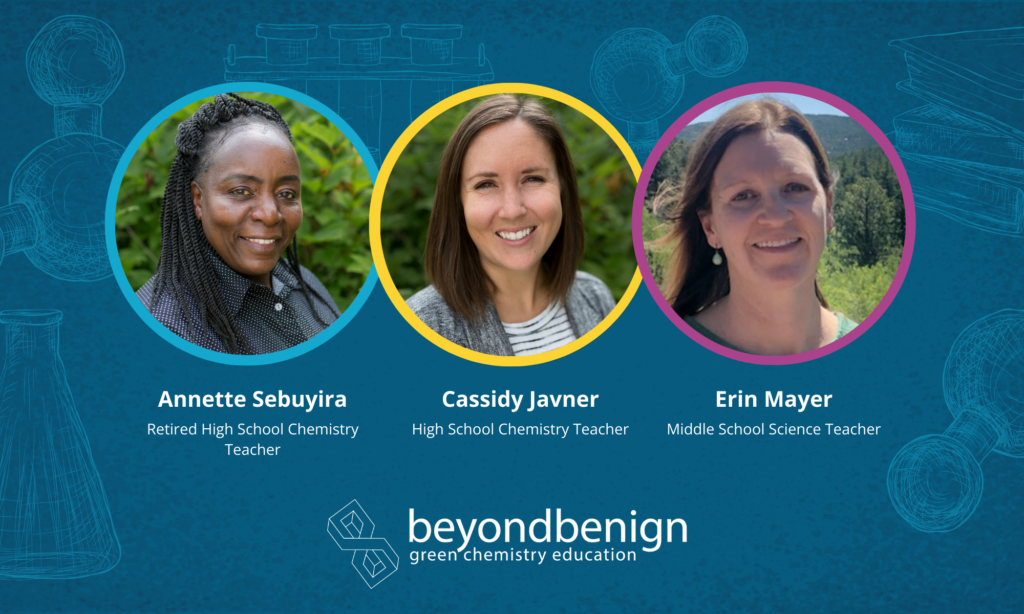
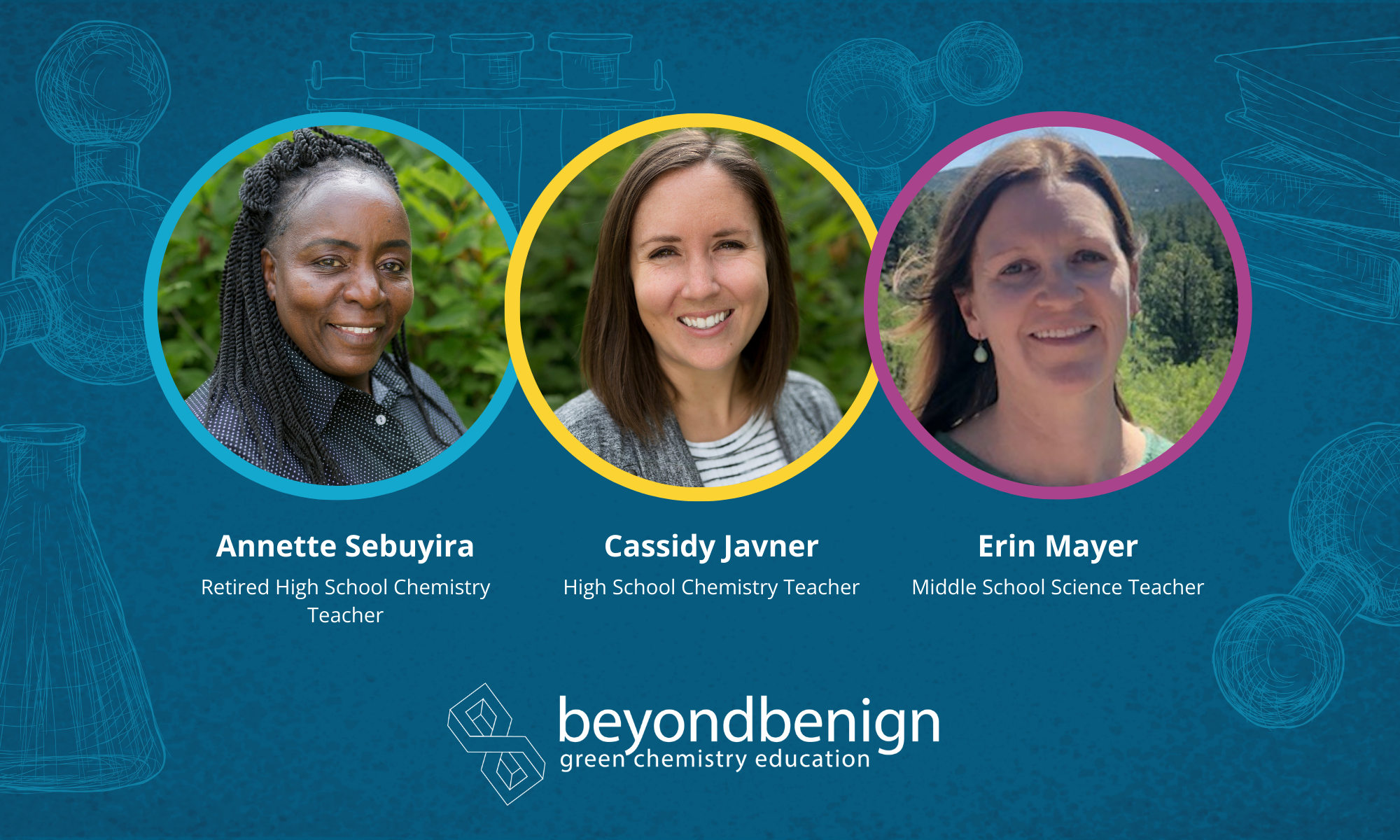
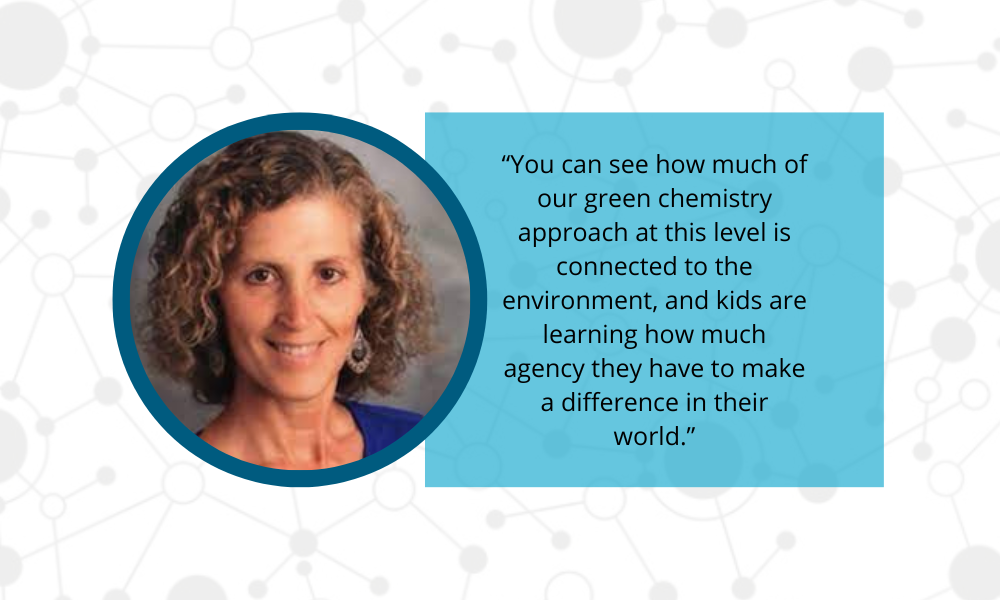 Veronica Morabito Weeks, a passionate fifth-grade educator with 28 years of teaching expertise in Long Island, New York, emphasizes that while green chemistry is commonly associated with environmental sciences in elementary classrooms, she has successfully integrated its principles across various subjects such as ELA, economics, civics, and even within discussions about food. “Being an elementary teacher, I don’t just do science. I do everything!” Veronica says. “I stick science in everywhere.”
Veronica Morabito Weeks, a passionate fifth-grade educator with 28 years of teaching expertise in Long Island, New York, emphasizes that while green chemistry is commonly associated with environmental sciences in elementary classrooms, she has successfully integrated its principles across various subjects such as ELA, economics, civics, and even within discussions about food. “Being an elementary teacher, I don’t just do science. I do everything!” Veronica says. “I stick science in everywhere.”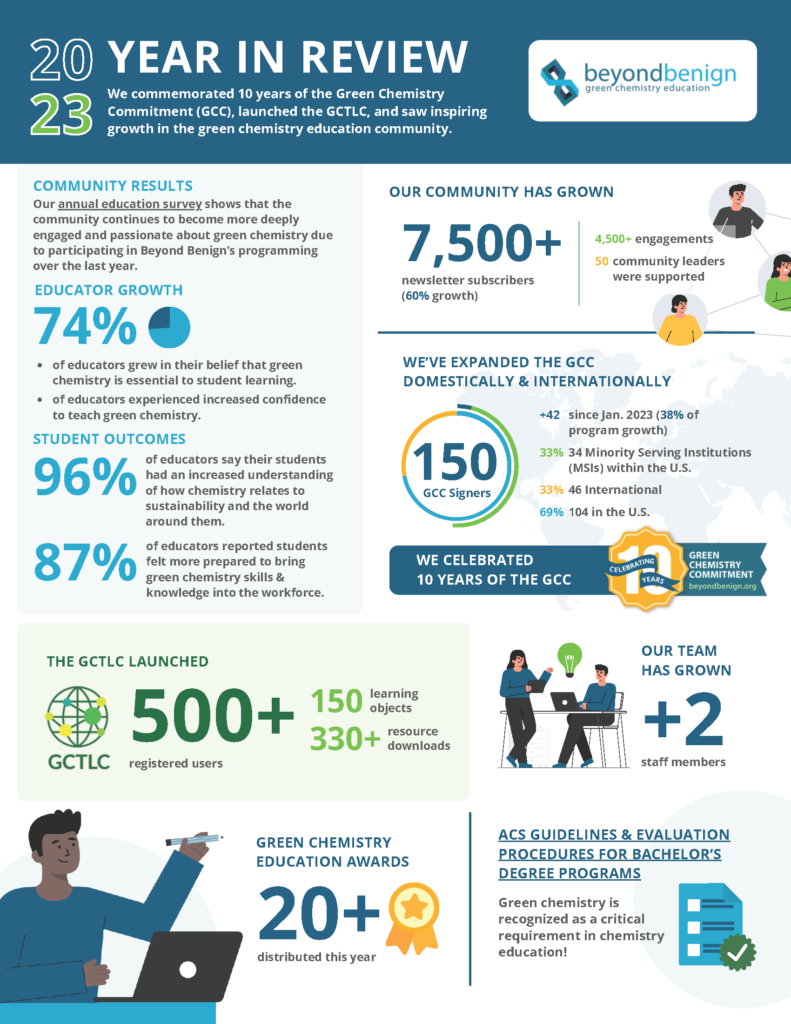
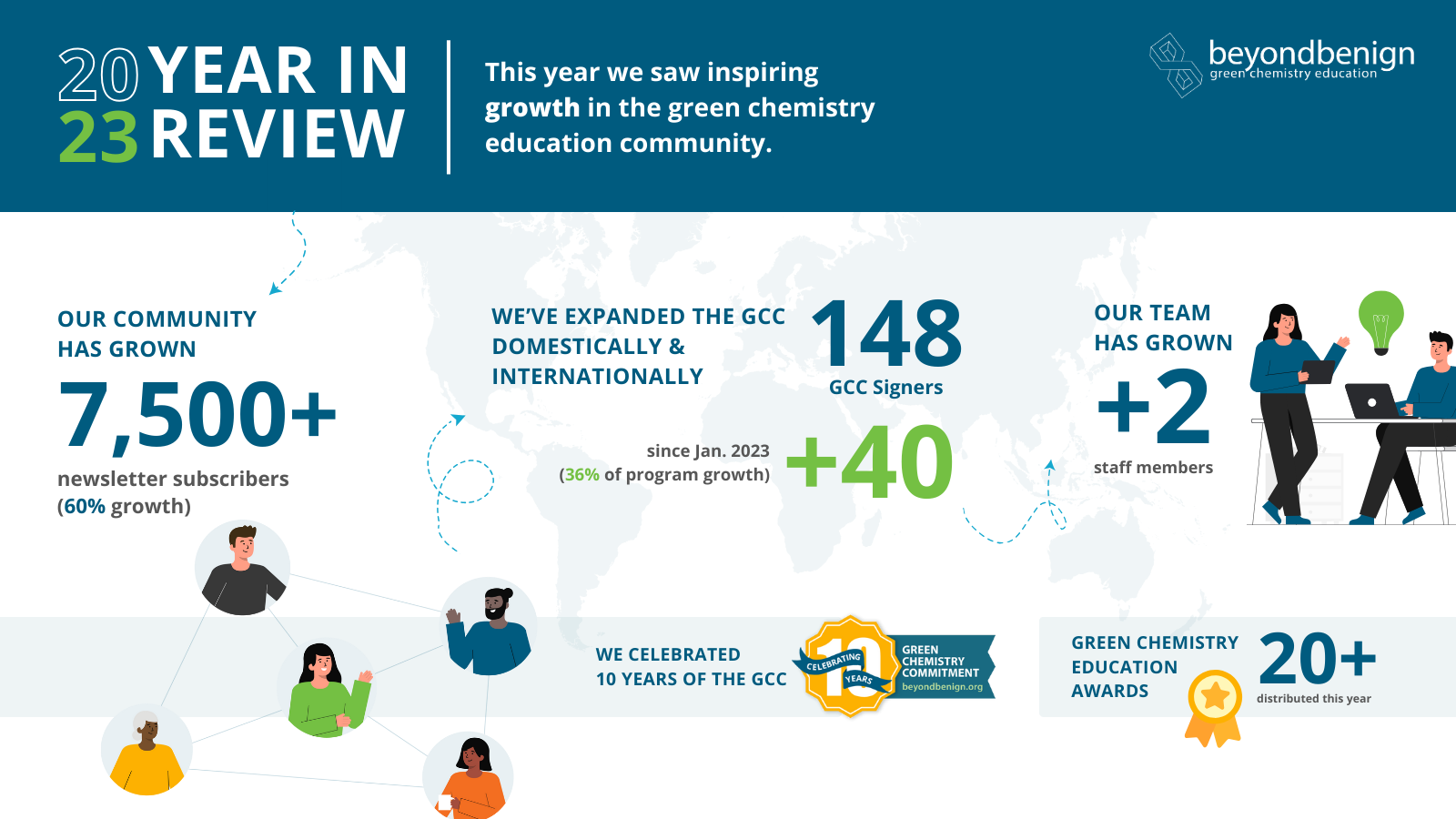
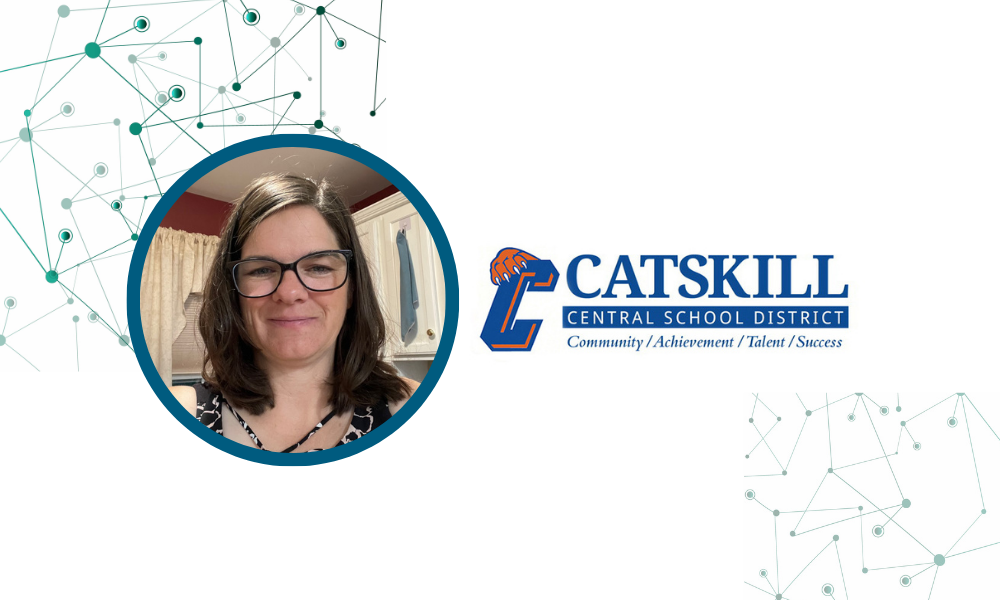 Catskill Senior High School in New York State recently received the kind of news that no school wants to hear during construction. A broken pipe was discovered in the crawl space under the science classrooms with a puddle of unidentified liquid underneath. Stefanie Loomis, a high school chemistry and physics teacher and Beyond Benign Lead Teacher, was teaching above that crawl space.
Catskill Senior High School in New York State recently received the kind of news that no school wants to hear during construction. A broken pipe was discovered in the crawl space under the science classrooms with a puddle of unidentified liquid underneath. Stefanie Loomis, a high school chemistry and physics teacher and Beyond Benign Lead Teacher, was teaching above that crawl space.